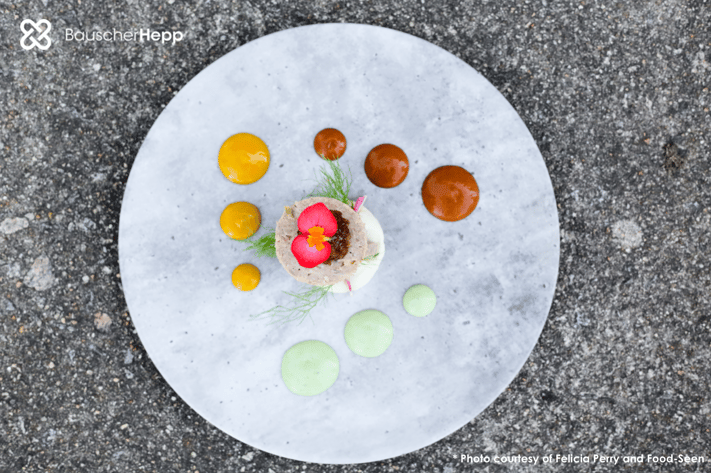
Almost nothing inspires passionate debate like food. And in the age of Instagram, those passions are apparently spilling out onto the plate, as well. Literally.
Over the last several years, sauce dots, or "haute dots of sauce" according to the title of a recent NPR article on the subject, have become more and more popular as chefs look to art as inspiration for their platings.
Like a Georges Seurat painting but with far fewer dots, many of our plates are now driven by a pointillist style that often highlights primary colors, bright hues, and eye-catching designs. Zigzags, swirls, and smears are also part of this trend, and it apparently has stirred passions on both sides of the debate.
"I like a natural way of plating," said Doug Paine of the Hotel Vermont in Burlington. "I don't like zigzags and dots."
And there are big time detractors across the pond, as well.
"If I get one more plate put in front of me with six dots on it," said British cookbook writer Delia Smith, "I will go mad."
The reality, though, is dots are easy. They're effective. And many people still like them. As mentioned in the NPR article, one of the main points of emphasis in Anthony Bourdain's Kitchen Confidential is the need to have a cheap squeeze bottle to elevate your platings. He even referred to it as an "indispensable object in most chefs' shtick."
What does the sauce dot debate actually mean for today's chefs?
Everyone has to decide for his or herself. Are sauce dots attractive and attention-grabbing? Are haute dots trite and overplayed? The reality is probably a combination of both depending on who you ask, and in some cases, the same person can have feelings on both sides of the issue at the same time.
Take this 2017 review of a Charleston oyster bar as a prime example. Within the course of the review, the critic both makes the case for and against sauce dots.
"My only qualm," she writes, "three dots of hot sauce is just a tease. I appreciate pretty plating as much as the next guy, but a compensatory gesture of a small bottle on the side wouldn't have hurt."
This is one of the biggest drawbacks to sauce dotting according to naysayers. While they may look pretty, there's just not enough on the plate to accommodate the desire for more flavor in the dish.
In the same oyster bar review, though, the critic cites "the meat itself is plated upon well-balanced swirls of romesco and dots of a yellow horseradish-infused sauce. It's a dish that is almost as lovely to look at as it is to eat."
So in reality, sauce dots help pique appetites with their beauty. And if the sauce is done right, they'll probably leave us wanting more. Both are objectives for chefs, so don't look for sauce dots to go away any time soon. In fact, we'd suggest using the plate to help enhance the design, as seen above on our Concrete plate from Tafelstern.





